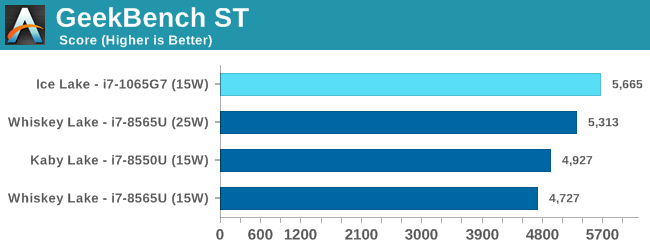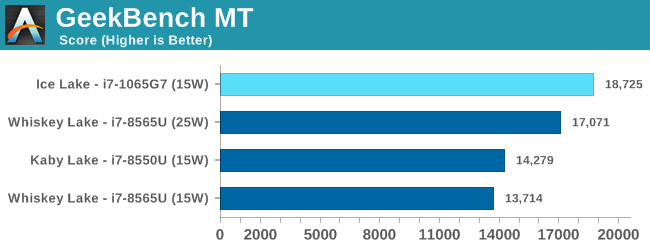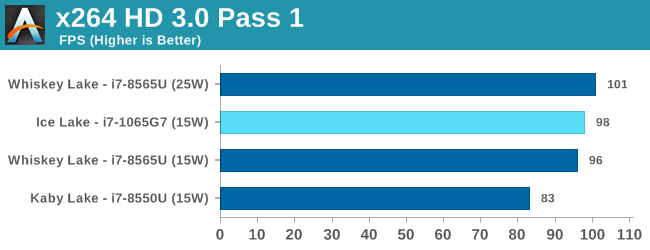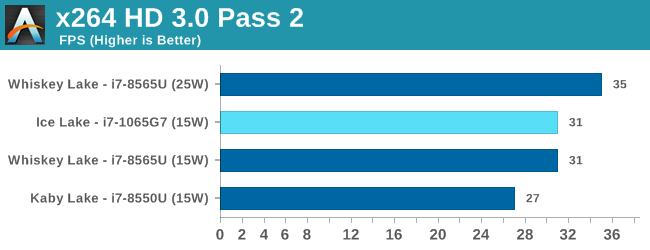The Ice Lake Benchmark Preview: Inside Intel's 10nm
by Dr. Ian Cutress on August 1, 2019 9:00 AM EST- Posted in
- CPUs
- Intel
- GPUs
- 10nm
- Core
- Ice Lake
- Cannon Lake
- Sunny Cove
- 10th Gen Core
Synthetic and Legacy Results (15W)
The realm of synthetic testing is a tricky one, given that there are plenty of benchmarks in the wild that provide a number, but aren’t actually based on real workloads, or are very limited in what they actually test. The issue here is that this software tries to emulate real-world, but it isn’t immersed in the harnesses or matrix of what a user might actually experience. For that reason, we only tend to use these benchmarks based on reader requests.
Legacy benchmarks are included for similar reasons, but can help to get a historical perspective.














261 Comments
View All Comments
Fulljack - Thursday, August 1, 2019 - link
lpddr4 would make it higher priced and stuck in premium device, as it's a soldered ram.RSAUser - Friday, August 2, 2019 - link
I think the commenter means DDR4L, low powered SO-DIMM and not the usual phone/tablet soldered RAM.Rudde - Thursday, August 1, 2019 - link
There are rumors (check AT forums) about a Gen 12 (ice lake is 11) discrete gpu with 512 EUs (arctic sound). I believe 64 EUs is confirmed max on Ice lake, but the generation after that (Tiger lake?) might have more.Mr Perfect - Thursday, August 1, 2019 - link
I notice that these parts all have Hyper threading. Has Intel addressed their security concerns with HT in Ice Lake, or do they see the benefits of HT to be greater then the risks in the mobile space?djayjp - Thursday, August 1, 2019 - link
And what about Zombieload...? Or was that just quietly swept under the rug?justaviking - Thursday, August 1, 2019 - link
QUOTE: "After attending the event, to which fewer than 10 press were invited, I now understand why. Some of the press invited didn’t have OS images, didn’t bring benchmarks with them, and were quite happy to go along with the flow. Intel provided benchmarks like Geekbench and 3DMark, which those press with their audiences were happy to run. I came prepared with both a new 1903 OS image and my benchmark suite, ready to rock and roll."And that is why we love AnandTech. :)
justaviking - Thursday, August 1, 2019 - link
And QUOTE: "It was clear that some of the press in attendance only needed a day (or half a day), but for what we do at AT, then two days would be better."Thank you for the article, and for doing the best you could in the time available.
ManDaddio - Thursday, August 1, 2019 - link
Well I'm glad that we got a little bit more looking to this part of Intel's 10nm. I'm looking forward to the next iteration to be honest.Actually I was more interested in the features of these new Intel laptops.
The benchmarks as you stated are just surface stuff until you can actually truly spend a while testing these things when they come out.
All the rave right now in some circles is AMD but I always liked Intel laptops for their features as well as performance.
And I have owned a couple AMD laptops. They were good and did the job but my Intel laptops were always much better. That's my experience.
I understand the challenges of putting an article like this out to the public who complains a lot or just wants to troll. Thanks for sharing.
Bulat Ziganshin - Thursday, August 1, 2019 - link
>AMD for Zen 2 decided to halve the L1-D, double increase the L1-D associativityit was L1-I cache
Drumsticks - Thursday, August 1, 2019 - link
In terms of pure performance, Icelake is definitely let down by it's available frequency. It's in bad need of a 10nm++ process or a backport to 14nm.It was a good idea to release it for laptops though, I think. Laptops definitely are about more than just the CPU, and the overall experience the Icelake featureset enables might actually be a good selling point.
I'd love to see an Icelake based microarchitecture released on Intel 14+++ though. Even though 14+++ has been around forever, I think it's still a good node. It's still completely untouched by any other node in frequency, power consumption isn't as important to desktop users, and the node must be so optimized by now that costs are good even with bigger dies.